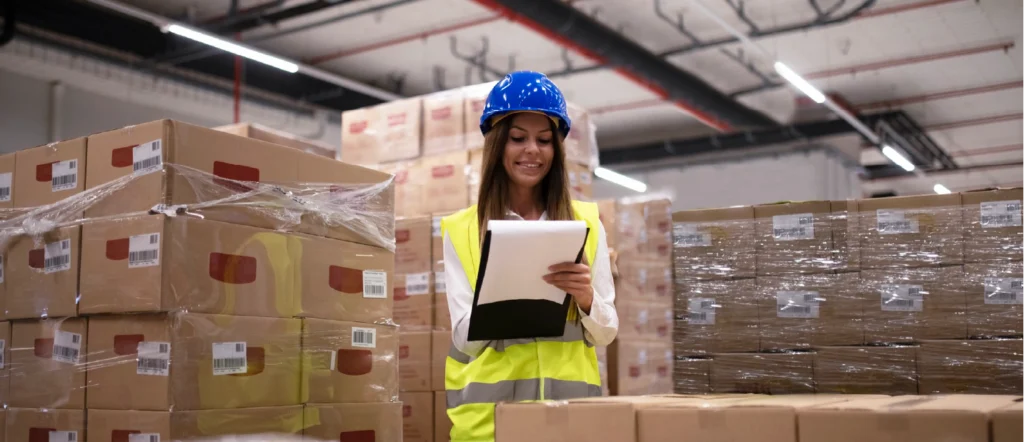An inventory valuation method is an accounting tool used to determine the cost of goods sold and the value of ending inventory in a specific accounting period.
Imagine your inventory as a box full of different types of candy. Each candy has a different cost and you need to know how much the whole box is worth at any given time. Valuation methods help you make this calculation.
Why are they important?
- Cost of sales calculation: Allows you to determine how much it cost you to produce or acquire the products you sold during a period.
- Inventory valuation: Shows you the value of the products you have in stock at the end of a period.
- Information for decision making: Provides you with relevant data to make decisions on purchasing, production and selling prices.
The main valuation methods are:
| PEPS (First In, First Out) or FIFO (First In, First Out): | It assumes that the first products to enter inventory are the first to be sold. It's as if the oldest candy in the box is the first to be eaten. |
| UEPS (Last In, First Out) or LIFO (Last In, First Out): | It is the opposite of PEPS. It assumes that the last products to enter inventory are the first to be sold. It would be like eating the newest candy first. |
| Weighted Average Cost: | It calculates an average cost for all products in inventory and uses it to value both sales and ending inventory. It is like calculating the average price of all the candy in the box. |
| Specific Identification: | It is used when each product has a unique and easily identifiable cost. It is like marking each candy with its individual price. |
Which method to choose?
The choice of method depends on several factors, such as:
- Nature of the products: If the products are perishable, the FEFO (First Expiry First Out) method may be more appropriate.
- Economic conditions: Inflation may influence the choice of method.
- Tax regulations: Tax laws may establish restrictions on the method to be used.
- Company accounting policy: Each company may have its own accounting policy.
Inventory valuation methods are essential for efficient inventory management and accurate financial statements. The choice of the appropriate method must be made carefully and considering the particularities of each company.
This time we are going to review the First In-First Out method.
Why is the PEPS method important?
The PEPS (First In, First Out) method is a fundamental tool in inventory management, especially in sectors where products have an expiration date or suffer from obsolescence.
Here are the main reasons why it is important:
- Avoid losses due to obsolescence: By selling older products first, you reduce the risk that they will deteriorate or lose value over time. This is especially relevant for perishable products such as food, drugs or electronic components with short life cycles.
- Improves cash flow: By selling older products first, the initial investment is recovered more quickly, which improves the company's liquidity.
- Simplifies accounting: By allocating the costs of older products to first sales, accounting becomes simpler and the risk of errors in inventory valuation is reduced.
- Complies with regulations: In some sectors, such as the food industry, there are regulations that mandate the use of valuation methods such as PEPS to ensure food safety.
The PEPS method is not only an accounting tool, but also a management strategy that contributes to:
- Optimize inventory: By avoiding the accumulation of obsolete products.
- Improve operational efficiency: By simplifying inventory control processes.
- Comply with regulations: By ensuring product quality and safety.
In what situations is the PEPS method particularly useful?
- Perishable products: Food, beverages, pharmaceuticals.
- Seasonal products: Winter clothing, beach items.
- Electronic components: With rapid technological obsolescence.
The PEPS method is a valuable tool for any company wishing to optimize inventory management and reduce losses. By prioritizing the sale of older products, it ensures a steady flow of inventory and improves the company's financial health.

You might be interested in: Learn I The art of finding the immediate: Storage strategies.
What are the disadvantages of the peps method?
The PEPS method, although it has many advantages, also has some disadvantages that are important to consider when choosing the most appropriate inventory valuation method for your company.
Disadvantages of the PEPS method:
- Underestimation of cost of sales in periods of inflation: When product prices increase over time, the PEPS method allocates the oldest costs, which are usually lower, to sales. This can lead to an understatement of cost of sales and, therefore, an overstatement of profits. As a result, more tax may be paid than necessary.
- Does not consider obsolescence: The PEPS focuses on the date of entry of the product into inventory, but does not consider its expiration date or the degree of obsolescence. This can lead to the accumulation of products that are no longer desirable by customers, generating losses due to deterioration or devaluation.
- Requires detailed tracking: To properly implement the PEPS method, it is necessary to keep a detailed record of when each batch of product enters inventory. This can be complex and requires robust inventory management systems, especially in companies with a large volume of products.
In summary, the PEPS method, although widely used, is not perfect. It is important to evaluate these disadvantages along with the advantages to determine if it is the most appropriate method for your business.
In what situations might it be more appropriate to use another valuation method such as UEPS or average cost?
- Periods of high inflation: In these cases, UEPS may be more appropriate to more realistically reflect the cost of sales.
- Products with high turnover: If products sell quickly, the difference in cost between the first and last batches purchased may be minimal, so the average cost method could be a good option.
- Products with a high risk of obsolescence: In these cases, it is important to have stricter control over inventory turnover and to consider methods to quickly identify and eliminate obsolete products.
It is important to emphasize that the choice of inventory valuation method is a strategic decision to be made by each company based on its particular characteristics and objectives.
At ABC Logistics we integrate and implement most of these logistics solutions with our customers with the sole purpose of offering quality service and adding value to their business.
Subscribe to our newsletter to receive logistics and marketing news that maximize your business!





